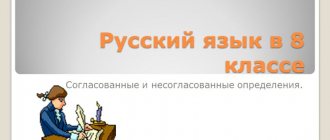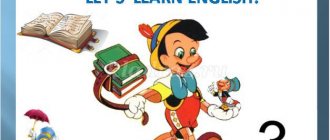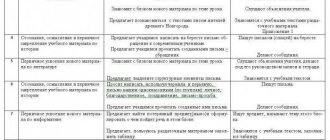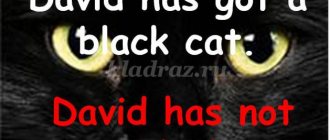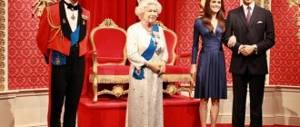To be in the past tense
The conjugation of the verb to be in the past tense has two forms:
— For the singular — Was [wɒz] with pronouns — I, he, she, it
— Past simple from the verb to be in the plural: — Were [wɜ(r)] for pronouns — we, you, they
You will understand everything faster if you read a few examples.
Examples with the verb to be in the past simple:
1. I was fond of sport - I was fond of sports. 2. We had to read it some times, because it was difficult - We had to read it several times because it was difficult. 3. Elvis Presley was American – Elvis Presley was an American. 4. They were at the hotel yesterday - Yesterday they were at the hotel. 5. When I was 5 I was afraid of the dentist – When I was 5, I was afraid of the dentist. 6. She wasn't at home last night, was she? – She wasn't at home last night, was she? 7. The ice-cream wasn't expensive - The ice cream was inexpensive. 8. She was at the supermarket yesterday evening, but I wasn’t - Yesterday evening she was at the supermarket, but I wasn’t. 9. We were at the post-office yesterday morning, but you weren’t - We were at the post office yesterday morning, but you weren’t there. 10. By the way, where were your sisters that day? - By the way, where were your sisters that day?
As you can see from the examples, the conjugation to be past simple is very easy to remember. It has only two forms, which makes learning easier.
Past Simple: rules of education
The only part of speech that can be changed when forming the past tense are verbs, which can be regular or irregular.
Regular verb or Regular verb in the past tense is formed by adding the ending -ed to it.
| Present Simple | Past Simple |
| I want to buy a large house. (I want to buy a big house.) | I wanted (want + ed ) to buy a large house. (I wanted to buy a big house.) |
Everything is quite simple, but it is worth considering two features:
Appending ending
- If a verb ends in a vowel -e, which is usually never pronounced in words, that vowel is omitted.
| to liv e - liv ed (live - lived) | In the word live, the letter e is dropped to add the ending -ed. live -> live liv + ed = lived |
| to creat e – creat ed (create – created) | In the word create, the letter e is omitted to add the ending -ed. create -> creat creat + ed = created |
| to caus e - caus ed (call - called) | In the word cause, the letter e is omitted to add the ending -ed. cause -> cause caus + ed = caused |
- If a verb ends in the letter -y and is preceded by a vowel, then the ending is added according to the standard rule without any changes. However, if the -y is preceded by a consonant, the -y is replaced with -i.
| Vowel do - y | Consonant before -y |
| to st a y - stay ed (stay - stayed) | to t r y - tr ied (try - tried) |
| to pr a y - pray ed (pray - prayed) | to bu r y - bur ied (bury - buried) |
| to pl a y - play ed (play - played) | to p r y - pr ied (poke your nose - poked your nose) |
- If the verb ends in a consonant -l, it is doubled.
| to travel l - travel ll ed | travel - traveled |
| to protoco l - protoco ll ed | log - logged |
| to cancel l - cancel ll ed | cancel - canceled |
- If a verb ends in a consonant and consists of two or more syllables where the stress is on the last one, the consonant is doubled.
| to admi t — admi tt ed | admit - admitted |
| to transfer - transfer rr ed | translate - translated |
| to forma t - forma tt ed | format - formatted |
- If a one-syllable verb ends in a consonant preceded by a short vowel, that consonant is doubled.
| to cla p - cla pp ed | clap - clap |
| to no d - no dd ed | nod - nodded |
| to sto p - sto pp ed | stop - stopped |
The exception is verbs ending in -w and -x:
| to bo w - bo w ed | bow - bowed |
| to fi x - fi x ed | fix - fixed |
| to glo w - glo w ed | blaze - blazed |
All these features are called spelling rules. Knowing them is necessary to avoid mistakes.
Pronunciation of the ending
- The ending is pronounced [d] after voiced consonants, with the exception of the letter d, and after vowels.
| to li e - lied (to lie - lied) | Ends with vowel e |
| to blosso m - blossomed (to blossom - blossomed) | Ends with a voiced consonant m |
| to shorte n - shortened (to shorten - shortened) | Ends with a voiced consonant n |
- The ending is pronounced [t] after voiceless consonants, with the exception of the letter t.
| to develo p - developed (develop - developed) | Ends with a voiceless consonant p |
| to ski p - skipped (skip - missed) | Ends with a voiceless consonant p |
| to as k - asked (ask - asked) | Ends with a voiceless consonant k |
- After the consonants d and t, the ending is pronounced [ɪd].
| to fol d - folded (fold - folded) | Ends with d |
| to sor t - sorted (sort - sorted) | Ends with t |
| to ac t - acted (act - acted) | Ends with t |
Sentence forms of the verb To be in the past tense
Let's move on to constructing sentences of all three forms: Affirmative, Negative and Interrogative. We have provided you with tables of the verb to be in the past tense, in which you will find rules and examples of to be past simple.
The affirmative form of the verb to be in the past simple
We have already talked about how affirmative sentences are constructed in the article “to be” in the present tense. In the past form, the verb “to be” is constructed in exactly the same way, you just need to choose the appropriate form was or were depending on the person.
| Subject _ | To be | Example Example |
| I - I | was | I was close to my mother - I was close to my mother. |
| He/she/it – he, she, it | was | He was the black sheep of the family - He was the black sheep in the family. She was in two minds - She doubted. |
| You/We/They – you/you, we, they | were | You were unemployed - You were unemployed. We were at home - We were at home. They were sleepy - They were sleepy. |
The verb can be preceded by WH- Question word (Why, Who, What, Where etc.), that is, a question word.
This type of question is called a special question.
Example:
-Are you hungry? Yes, I was. - Were you hungry? Yes. - Why were you hungry? Because I didn't buy food - Why were you hungry? Because I didn't buy food.
Negative form of the verb to be in the past simple
The negation of To Be can be made by adding the particle not after the forms was or were . In colloquial speech, the abbreviated forms weren't [wɔznt] and weren't [wɜːnt] are often, and indeed often, constantly used:
- They were all very happy - They were all happy. - My brothers, my sisters and I weren't at the exhibition - My brothers, sisters and I were not at the exhibition.
| Subject _ | To be | Example Example |
| I - I | was not or wasn't | I wasn't busy - I wasn't busy. |
| He/she/it – he, she, it | was not or wasn't | He wasn't married - He wasn't married. She wasn't honest with me - She wasn't honest with me. |
| You/We/They – you/you, we, they | were not or weren't | You weren't at the wedding - You weren't at the wedding. We weren't creative - We weren't creative. They weren't enemies - They weren't enemies. |
Interrogative form of the verb to be in the past simple
To use the past simple verb to be, put to be before the subject.
| To be | Subject _ | Example Example |
| Was | I - I | Was I ill? - I was sick? |
| Was | He/she/it – he, she, it | Was he from Wurzburg? – Was he from Wurzburg? Was she accepted onto a course? – Was she accepted for the course? |
| were | You/We/They – you/you, we, they | Were you late? - You are late? Were we generous? – Were we generous? Were they relaxed? – Were they relaxed? |
English lesson notes, grade 3 “Past Simple”
| № | Lesson stage | Lesson content | Methods, working methods | Operating modes | Time | TSO, visibility | Notes |
| 1 | Organizing time | - Good morning! I am glad to see you! Sit down, please. Let's begin our lesson with greeting each other. | Conversation | P1, P2 PP | 2 minutes | ||
| 2 | Phonetic exercise Slide 1 | — Let's do phonetic drill. Look at the blackboard, please, what sound is this? Repeat after me. [w,w,w] - all together. [w] - wear, wore, what [ei] - make, made, gave [ↄ:] - bought, call, ball — Who wants to read the words? - Excellent! | Repeat after the teacher | T T Ch | 2 minutes | Slide | |
| 3 | Determining the topic of the lesson and setting the goal of the lesson Slide 2 Slide 3 | - Guys, today I would like to sing a song with you, but I can’t sing it, because... there are mistakes in it. Please look at the screen and tell me what mistakes were made. - Well done! But we will sing a song at the end of the lesson. And now you probably already guessed what the topic of our lesson is today, right? That's right, Past Simple. - If at the next lesson we have a test on this topic, then what should we do in class today? Right! Repeat and consolidate material on this topic. | Problem situation | T Ch | 2 minutes | Slide | |
| 4 | Updating knowledge "Grammar Forest" Slide 4 | — Now, I offer you to work in groups. Now I suggest you work in groups of four people. There are 3 baskets in front of you, the group that got the green basket draws up a diagram of an affirmative sentence in English on a strip of paper. Yellow basket - interrogative sentences Blue basket - negative sentences. | Reception "Basket" | Group work Ch↔Ch | 6 min | 3 baskets of green, blue, yellow flowers; multi-colored leaves (15 pcs) | Kids also need glue sticks |
| 5 | Training in the use of verbs in the Past Simple. | — Let's work with verbs. There are cards with English verbs on your desk. Your task is to find its pair and make a sentence. Work in pairs, please. | Writing sentences in pairs | T Ch Ch↔Ch | 6 min | Cards with verbs in 1 and 2 forms. | |
| 6 | Fizminutka | - Let's have a rest. Stand up, please. Let's sing and dance (The Princess Pat) | T Cl | 2 minutes | |||
| 7 | "Listening and speaking corner" Listening Slide 5.6 | Open your activity books, p. 46, ex.1 Listen to the text and do the task. Now we'll check your answers. | Completing a task based on a listened text Performing self-control using the table | T Cl Independent work | 5 minutes | Workbook, computer, speakers | |
| 8 | Consolidating interrogative forms in the Past Simple. Slide 7 Slide 8 | — Please answer my questions. Did you play computer games Did you decorate your house last month? Did you play football last week? - Look at the board. Make up questions. (The words are mixed). | Question and answer exercises | T P1, P2, P3 Frontal and individual work T P1, P2, P3 Frontal and individual work | 3 min 5 minutes | Presentation | |
| 9 | Working with song lyrics Slide 9 Slide10 | — Look at the screen again, please. Let's correct mistakes at the text of the song. | Finding and correcting errors in song lyrics | T P1, P2, P3 Frontal and individual work | 7 min | Presentation | The song is sung without music accompanied by clapping. |
| Summing up the lesson | - Today we had a lot of work. Do you like this lesson? - I have multi-colored sheets of paper on my table, I will ask you to write there a task that was difficult for you. — The lesson is over. Thanks for your work! Good bye! | T Ch | 5 minutes | Multi-colored sheets |
date
: 31.01.2017
Class:
3 "B"
Subject:
"Past Simple"
Type of technology:
activity method technology
Lesson type:
generalization lesson
The purpose of the lesson
: consolidation of grammatical skills on the covered topic
Tasks:
Educational:
1. To update students’ knowledge of affirmative, negative, interrogative structures of the past simple tense in education.
2. Organize individual, male, and group work for students.
3. Record knowledge on the topic being studied through a system of exercises.
Educational:
1. Train students’ ability to reflect on their own activities.
2. Develop self-assessment skills.
Educational:
1. Maintain students’ interest in the topic “Past simple tense”.
2. Contribute to the development of the ability to work in groups and in pairs.
Short answers with to be in the past form
In order not to constantly repeat ourselves, we came up with short answers that can be answered briefly and clearly. We display the short answer rule in the table. Read carefully several times.
| Question Question | Positive Short Answers | Negative Short Answers |
| Was I on time? | Yes, you were. | No, you weren't. |
| Are you right? | Yes, I was. | No, I wasn't. |
| Was he shocked? | Yes, he was. | No, he wasn't. |
| Was she from Italy? | Yes, she was. | No, she wasn't. |
| Was it a big apartment? | Yes, it was. | No, it wasn't. |
| Were we upset? | Yes, we were. | No, we weren't. |
| Were you late? | Yes, we were. | No, we weren't. |
| Are they confused? | Yes, they were. | No, they weren't. |
Remember, we do not shorten the pronoun with the verb in affirmative short answers.
Having dealt with the previous rule, let's move on to the next section and look at when the verb to be is used in the past form.
Was/were used
You already know the two forms of the verb to be in the past simple, and how the verb to be in the past simple is conjugated. In order to fully understand the rule, let’s look again at how it transforms from the present to the past.
- 1. Was/were are past forms of am/is/are. Present tense: am/is = past: was . Present form: are = past form: were .
Example:
— Scott and I are at home => Scott and I were at home. (are => were) — Is she excited about the trip? => Was she excited about the trip? (is => was)
- 2. We use was/were when talking about the past. The following phrases are often used: yesterday, last night, last week, two months ago, etc.
Example:
- Yesterday we were late for the concert - Yesterday we were late for the concert. — Were they at the beach last Friday ? – Were they on the beach last Friday?
- 3. We use was/were with the expression was/were born . The expression be born is always in the past form.
Example:
- She was born in London in 1976 - She was born in London in 1976. —Where were you born? I was born in Norway – Where were you born? I was born in Norway.
The video uses 2 forms of the verb to be in past simple, watch it several times and then say the dialogue.
